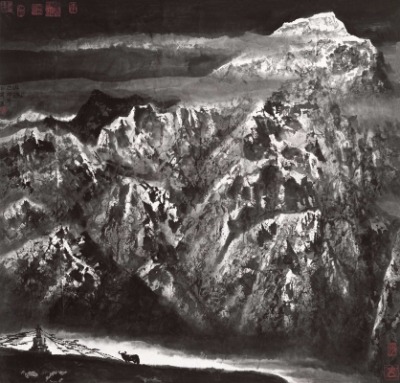 |
|
Li's ongoing exhibition in Beijing features works depicting the natural scenery and people he encountered during his many journeys to Tibet, Qinghai, Gansu and Yunnan.[Photo provided to China Daily] |
Photos recording Li Xiaoke's journeys are also shown at the ongoing exhibition.
Liu points to one photo that had been taken during her husband's 11-day excursion in Qinghai in 1990, spotting an old down jacket he wore to keep himself warm in the freezing cold of that winter, and says the jacket was hers.
"Sometimes because of poor communication, we lost contact, and I didn't know his whereabouts for a couple of days. It also happened when he traveled years later," she says, adding that such trips were expensive. "We sold our cameras to raise money for transportation."
Li Xiaoke returned from his most recent trip last year. He has developed a heart problem and therefore is unable to undertake another expedition this year.
He often made sketches on paper sitting outside the monasteries he visited. Several of these meters-long ink works done over the past two years are also on show at the current exhibition.
Luo Yicheng, a friend and commentator on culture, says that when looking at Li Xiaoke's lengthy sketches, one would feel that sketching is not something that can be done leisurely, it is like pilgrimage during which one should respect every life and embrace kindness, just like Li does.
Since he turned 70, Li Xiaoke has emphasized the variations of lines in his paintings. These days, he explores the thickness of ink more. He utilizes the possibilities of monochromatic color to depict, for example, the solidity of architecture, the width of trees or the softness of temples' curtains flying in the wind.
"With a brush, ink and water, he displays Chinese brushwork well, turning sophistication into simplicity and uses simplicity to reflect sophistication," Liu says.
Even when he needs to add other colors, Li Xiaoke only adds them to the people in his paintings, the blossoms and the sky.
Li Xiaoke says painting is not just about skills or personality, it is about every stroke an artist makes with a peaceful heart and mind. He says it is like farming, where one reaps what one sows.
"Only when people are down to earth, and put themselves in a humble position, can they gain an objective view of the world."